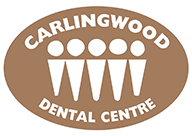To keep your smile and oral health in check, brushing properly is one of the most important things you can do. Unfortunately, brushing incorrectly is more common than not, and it can leave your teeth and gums more susceptible to decay and gum disease. To learn how to brush correctly, here are some rules of thumb for efficient brushing to practice.
Brush For Two Minutes
First and foremost, most people don’t spend nearly enough time brushing their teeth. Spending a few seconds going over them with your brush isn’t doing your mouth any favours. So an important rule of thumb for efficient brushing is to make sure brushing lasts at least two minutes. This may seem like a long time, but that’s how you can thoroughly get into all the areas you need to. You can use a stopwatch if need be.
Be Gentle
There’s a common misconception that the more aggressive you brush, the cleaner your teeth will be. But all of that abrasive brushing can really end up doing more damage than good. To get your teeth and gums clean, it doesn’t require excessive force. In fact, gentle pressure is all you need. Always use short, gentle strokes while brushing and pay extra attention to those hard to reach areas that are often neglected, such as at the very back of the molars.
When brushing, use the brush in a circular motion rolling it away from the gumline, and using an open hand rather than a closed fist to ensure you’re not pressing down too hard.
Focus On The Gumline
When you brush, don’t forget to aim your toothbrush to clean along the gumline. Eliminating bacteria and plaque along the gums is equally as important as the teeth. Using floss after each brush will remove build up that the brush can’t access. So always include flossing and never neglect your gums.
Brush Your Tongue
Bacteria can also linger along the tongue, causing bad breath. So as another rule of thumb for efficient brushing and fresher breath, always give your tongue a brush. You can use your toothbrush or a tongue scraper, but be careful not to press down too hard. Your tongue is sensitive and can end up bleeding if you’re too aggressive.
Replace Toothbrush Every 3 Months
If your toothbrush is frayed, then the technique really won’t matter. Once the bristles are worn down, they simply can’t eliminate plaque and bacteria as efficiently. So monitor your brush, and once it begins to shown signs of wear and tear, or if it’s been longer than 3 months, it’s time to replace it.
Remember these simple rules of thumb for making your tooth brushing regime efficient and keeping your mouth healthy and happy.


